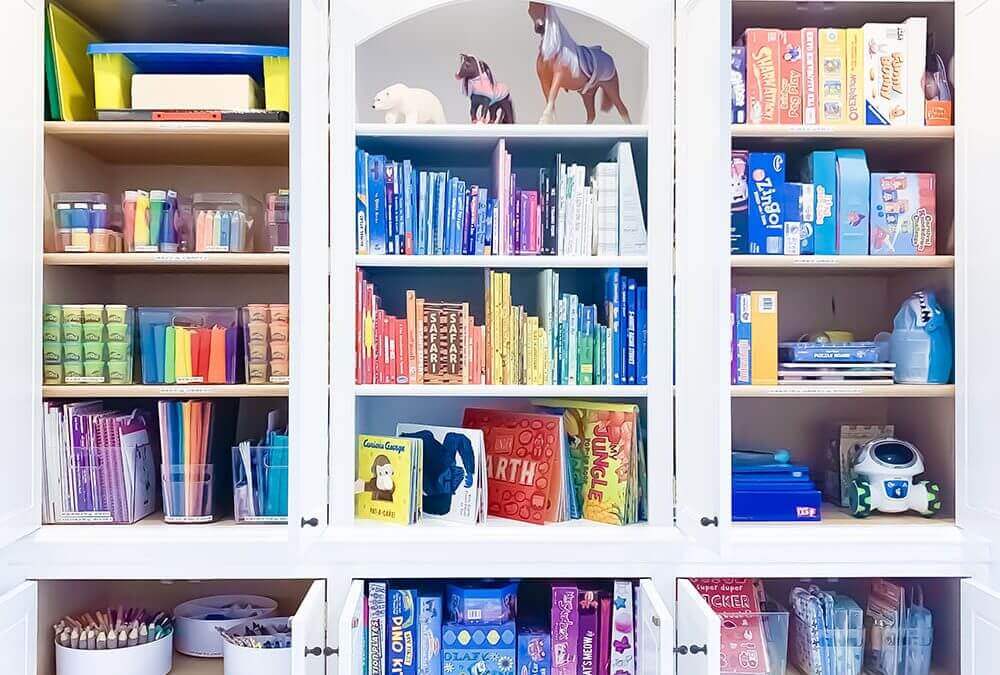Can you believe we’re six months into this pandemic?! I can’t either. I don’t know about you, but I’ve learned a lot about myself and my family these past few months. One thing I learned for sure is this: kids are messy!
Ok, not all kids. But as a mother of three boys, I know the kind of havoc they can sometimes leave behind.
Having your kids home for this length of time has made you realize things too. For starters, I’m sure you’ve realized that wow, your kids have A LOT of stuff. And it’s everywhere.
How can you possibly organize it all?
It’s possible! I swear, it is. This one’s for all the moms out there pulling at their hair, wondering how to best organize a playroom for your kids.
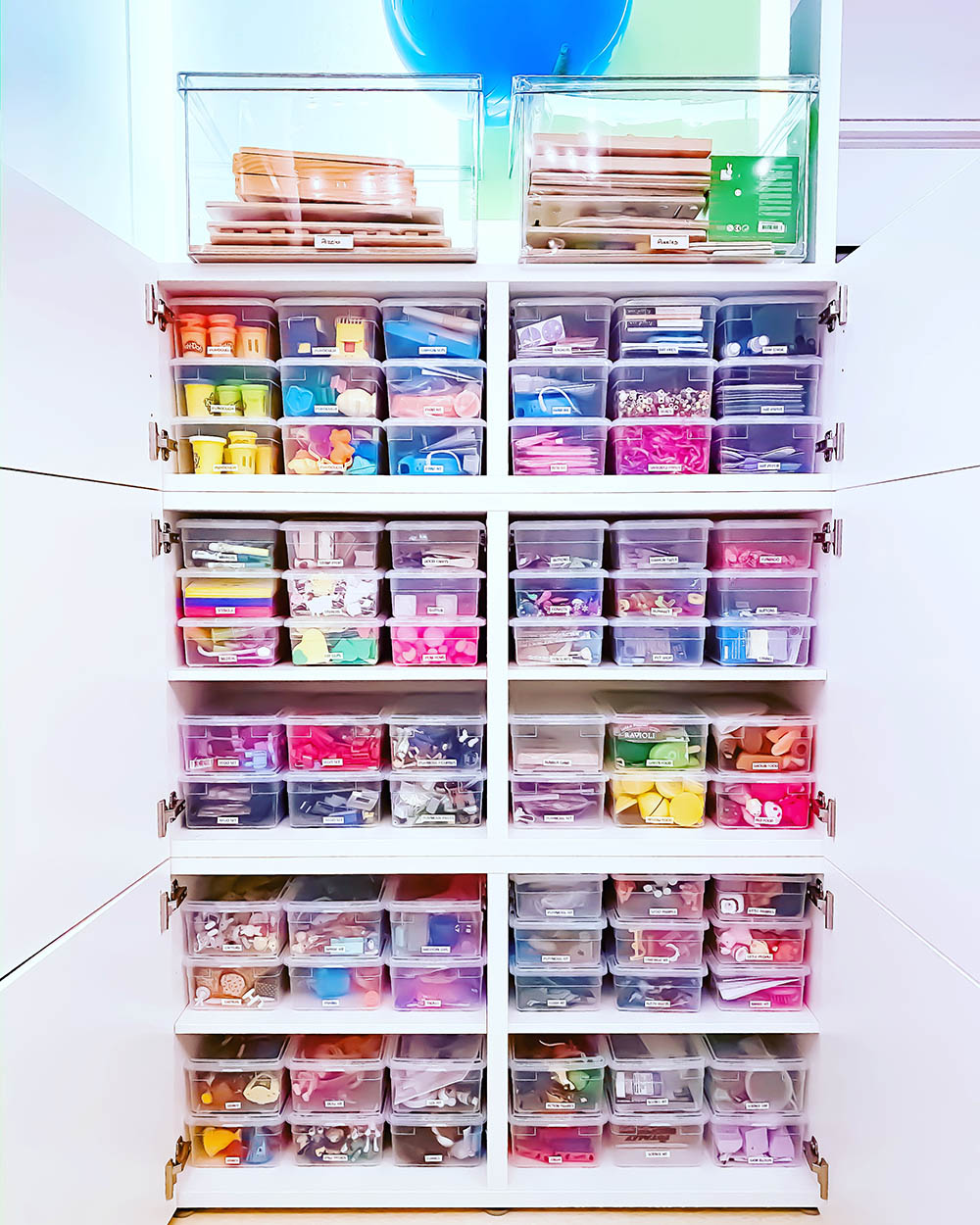
The art of decluttering and organizing toys
You’re not going to like this, but the first step to decluttering toys is to remove EVERYTHING! And I mean everything.
You have to clear the space to see what you’ve got to work with.
But you can save yourself a step later by separating like-items early on. As you take toys out of the play area, separate them into sections on the floor. If you have spare containers, use those.
Pile all similar toys together. Dolls with dolls. Trucks with trucks. Costumes with costumes.
Once the area is clear, scope the space out. You now have a better sense of what you have to work with. Map out how you’d like to set up your zones.
Some questions to ask:
- Do you want to keep your son’s toys on one side and your daughter’s on the other?
- Do you want to section off designated areas for certain items? For example: A LEGO corner there; a kitchenette corner there; and so on.
- Do you want to store toys so they are visible or hidden away?
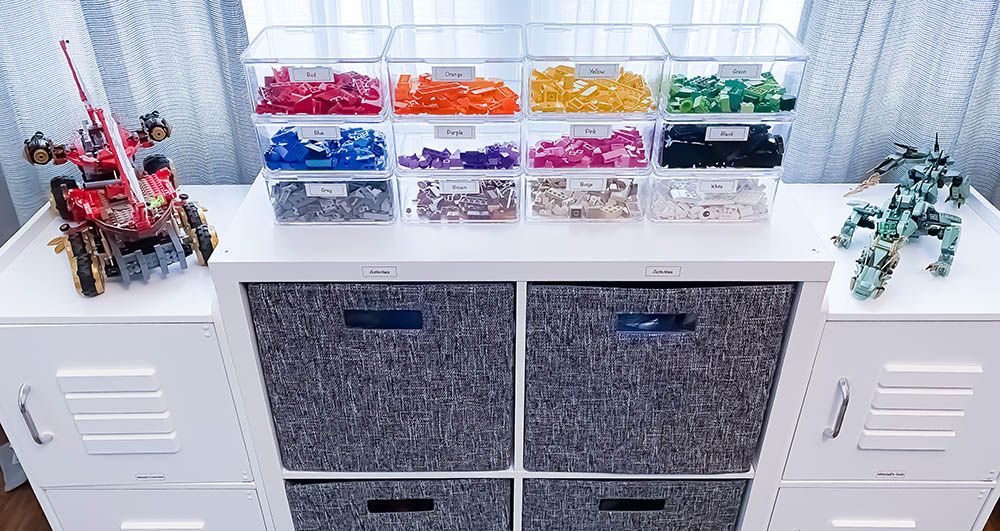
The more you know, the better you can organize the space for functionality.
After the area is mapped out and the zones are set up, it’s time to put the toys back.
Before that, however, take an inventory. How many dolls do you have? How many firetrucks? Do really need four pink tutus? Is one of the six firetrucks broken? Are there any dolls missing an eye?
Deciding what to keep and what to toss can be scary. Just because you don’t have a sentimental attachment to something doesn’t mean your child doesn’t. When taking inventory, ask yourself when was the last time your child played with the toy in question. If it’s been more than six months, add it to the donate pile.
Don’t keep anything that’s so broken there’s no way you can possibly fix it. But don’t discard items just yet.
Kids are weird. They won’t play with that one specific doll for months and then all of a sudden, they need her for a tea party.
Try the “out of sight, out of mind” method.
If there’s a toy your kid hasn’t played with for a while, store it away. Get it out of sight. If they don’t mention it after three months, donate it. If three months seems too long, go down to a month.
Trust me, if your kid hasn’t thought about a toy for more than three months, it’s rare they’ll remember it. And if they do, tell them it was time for another little boy or girl to play with it. Your kids will find something to replace it in no time.
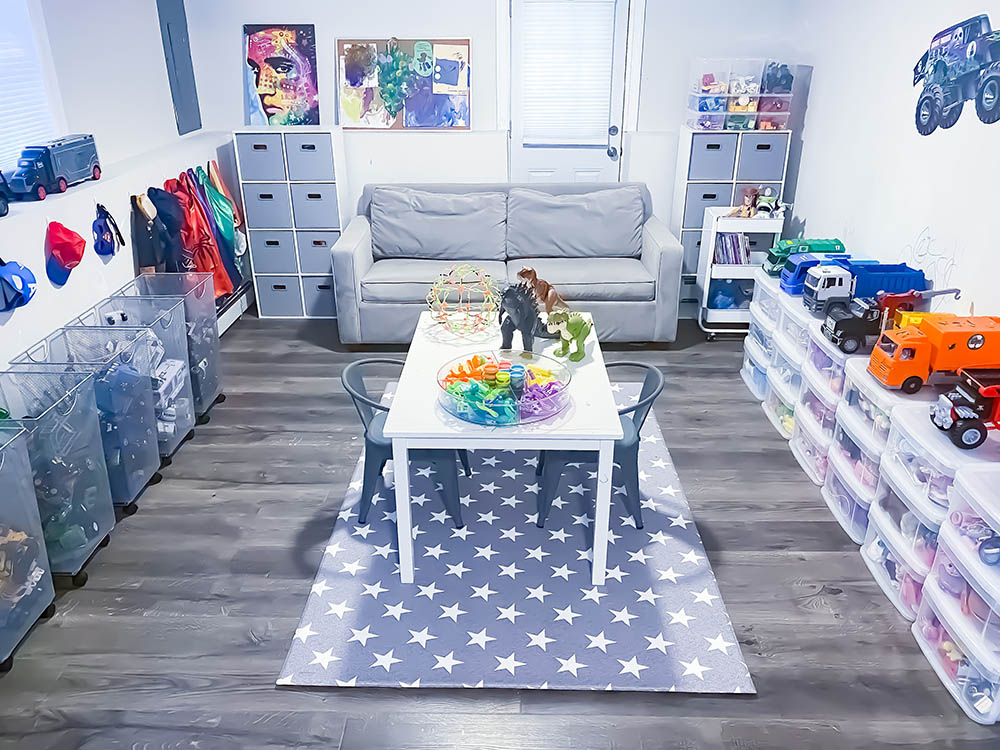
The more you know, the better you can organize the space for functionality.
After the area is mapped out and the zones are set up, it’s time to put the toys back.
Before that, however, take an inventory. How many dolls do you have? How many firetrucks? Do really need four pink tutus? Is one of the six firetrucks broken? Are there any dolls missing an eye?
Deciding what to keep and what to toss can be scary. Just because you don’t have a sentimental attachment to something doesn’t mean your child doesn’t. When taking inventory, ask yourself when was the last time your child played with the toy in question. If it’s been more than six months, add it to the donate pile.
Don’t keep anything that’s so broken there’s no way you can possibly fix it. But don’t discard items just yet.
Kids are weird. They won’t play with that one specific doll for months and then all of a sudden, they need her for a tea party.
Try the “out of sight, out of mind” method.
If there’s a toy your kid hasn’t played with for a while, store it away. Get it out of sight. If they don’t mention it after three months, donate it. If three months seems too long, go down to a month.
Trust me, if your kid hasn’t thought about a toy for more than three months, it’s rare they’ll remember it. And if they do, tell them it was time for another little boy or girl to play with it. Your kids will find something to replace it in no time.
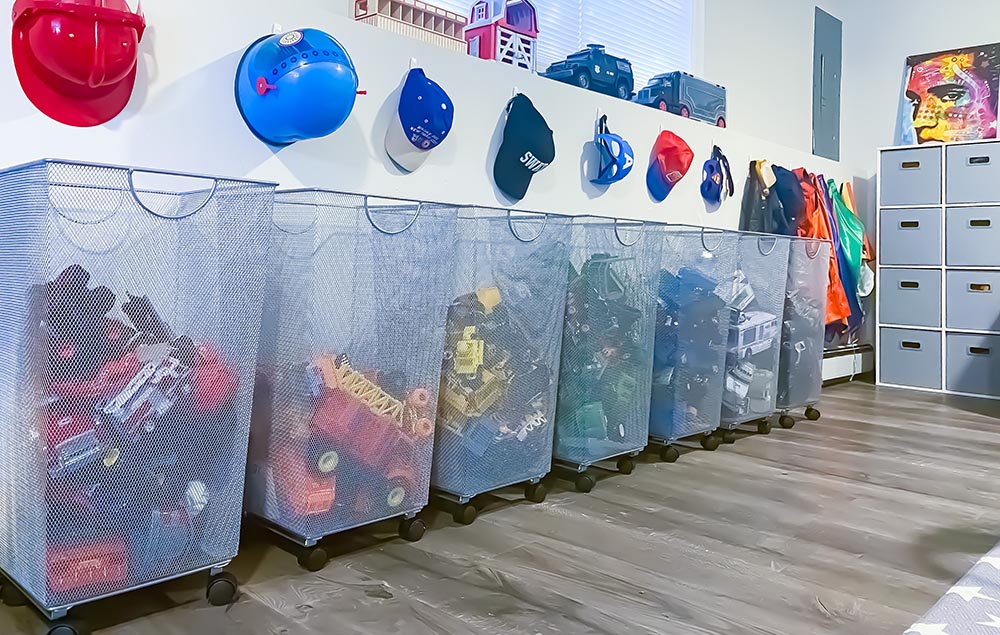
Frequently Asked Questions
What's the first step to organize a playroom efficiently?
Begin by decluttering and removing all toys. Separate them into categories like dolls, trucks, and costumes. This step helps you assess what you have and plan functional zones within the playroom.
Should I separate toys based on my child's gender or categories?
It depends on your preference. You can organize toys by gender or create specific zones for different categories like LEGOs, kitchenettes, and more. The goal is to tailor the organization to your child’s play habits and your space.
How do I handle sentimental attachment to certain toys during decluttering?
Recognize sentimental value but prioritize practicality. Ask when the last time your child played with a toy was. If it’s been over six months, consider donating it to make room for new memories.
Can Project Neat assist in organizing playrooms for maximum efficiency?
Absolutely! Project Neat specializes in top-quality home organization, offering personalized solutions for playrooms. Contact them for expert assistance in creating an organized and functional play space for your kids.
Are there specific zones recommended for an organized playroom?
Yes, consider creating zones for different types of toys. Designate areas for dolls, LEGOs, kitchenettes, and more. This zoning approach enhances organization and makes it easier for kids to find and enjoy their toys.
How do I create a functional and visually appealing playroom space?
Map out the playroom, set up zones, and organize toys strategically. Keep a consistent color scheme for a visually cohesive look. Project Neat can provide expert guidance to ensure both functionality and aesthetics.
What challenges do moms commonly face when organizing a playroom?
Moms often struggle with the sheer volume of toys and maintaining organization. Project Neat understands these challenges and offers effective solutions to create a well-organized play space for kids.
Can playroom organization be achieved without compromising style?
Absolutely! Project Neat specializes in creating organized spaces that are both functional and stylish. With their expertise, you can achieve a playroom that reflects your style while keeping toys neatly organized.
What role does Project Neat play in home organization beyond playrooms?
Project Neat offers top-quality home organization services beyond playrooms. Whether it’s decluttering, organizing, or optimizing any space in your home, they provide expert solutions tailored to your needs.
Can I rely on Project Neat for ongoing support in maintaining an organized playroom?
Absolutely! Project Neat not only assists in the initial organization but also provides ongoing support. Contact them for personalized solutions and guidance to keep your playroom organized in the long run.

